Choosing polypropylene dowels
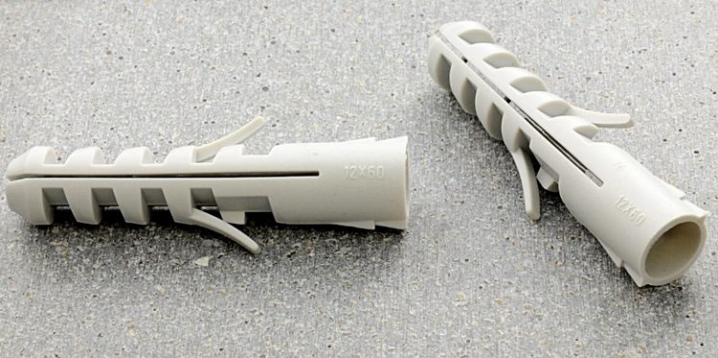
Dowels were invented for a long time, back in the middle of the twentieth century. There are a huge number of types of them on the market. In this article, we will look at polypropylene products, how to choose and install them correctly.
Peculiarities
A polypropylene dowel is a fastener element that is used for a wide variety of materials and is capable of carrying a fairly decent bearing load - up to 200 kg. This does not mean the maximum bearing capacity, but the one that he is able to withstand on a permanent basis. Dowels are made of various materials, including plastic and iron, but even a plastic fastener will be more reliable in operation than a screwed in screw or a driven nail.
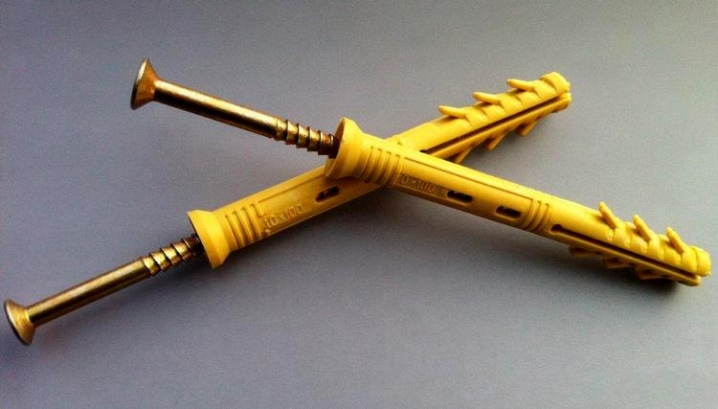
The main positive features of a polypropylene dowel:
- use in the production of environmentally friendly materials;
- strength;
- hardness;
- low hygroscopicity;
- excellent resistance to various acids and alkalis;
- well withstands high temperatures up to +80 degrees Celsius.
And also, unlike metal products, it does not corrode. And also a big advantage of this type of product is its low cost.
Negative features are aging and cracking with a long service life, low frost resistance. In severe frosts, the product loses its elasticity and, as a result, reliability. So this type of fastener is recommended for interior work, in rooms with any degree of humidity and aggressive environments, for example, in the chemical or food industry. But do not forget about its ability to crack and do not mount it in places where there is a high load.
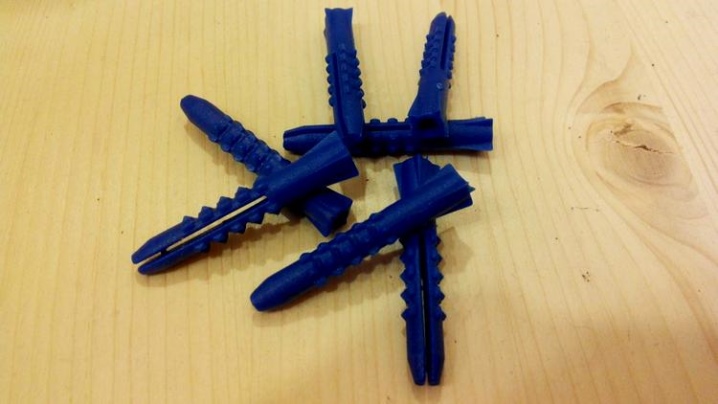
Important! At the moment, there is no valid GOST for plastic mounting cylinders, it was canceled without replacement, therefore, for the time being, manufacturers use European DIN standards.
Types and models
There are a lot of types of dowels, let's consider the main ones.
- Spacer. From the name of this type of fastener, the principle of operation is already clear - this is the expansion of the legs (there may be two or more of them) of the polyethylene cylinder to securely fix it in the hole. This is a fairly large class of products that is used in various areas of repair, construction or assembly work. They come in various lengths, with a countersunk head or a protruding cuff, and can be additionally equipped with special elements to protect against rotation and secure fixation in the holes. They are produced in a large assortment of sizes with a diameter from 6 to 10 mm and a length from 5 to 160 mm, but the most popular ones are 8x30 mm, 10x60 mm, 10x40 mm, 8x40 mm, 5x30 mm (the first number is the diameter, and the second is the length).
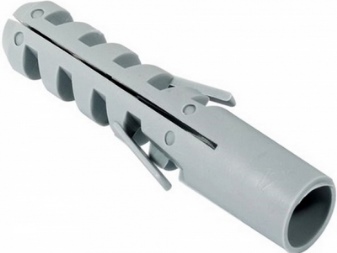

- Dowel nail. This is a very common type of fastener, it consists of two components - in fact, the nail itself, it can be threaded or without it, and a plastic case. At the moment of driving a nail into the body of the dowel, its petals diverge and securely fix the product in the recess. It provides very quick installation when there is a need to fasten a large number of elements in a short time. If you use a nail without a thread, then it will be almost impossible to remove it later. This type of fastener can have an additional collar for reliability. And it is also possible to have a secret side on it, which allows, if necessary, to install the dowel so that it will be invisible from the side. The model nail dowel is rather modest, since it is not designed for high loads.Basically, these cylinders are produced in diameters of 4, 5, 6, 8 mm, less often, but fasteners of 10 mm are found. The most popular among home craftsmen are products of such sizes as 6x40 mm and 6x30 mm.
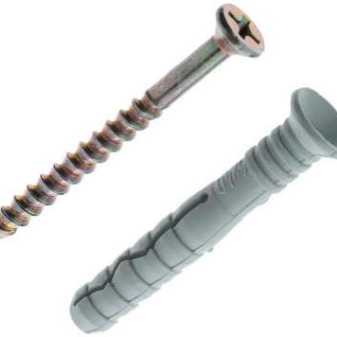
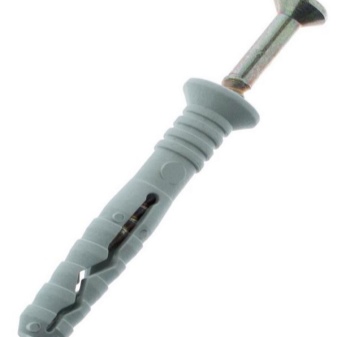
- Fasteners for fixing elements of facade insulation, foundations, and so on. The hat has a mushroom shape. Basically, they are produced in two diameters 8 and 10 mm, different lengths - up to 400 mm. The size of the "umbrella" is of great importance for fixing the insulation - from 45 to 90 mm. It is imperative to pay attention to this parameter.
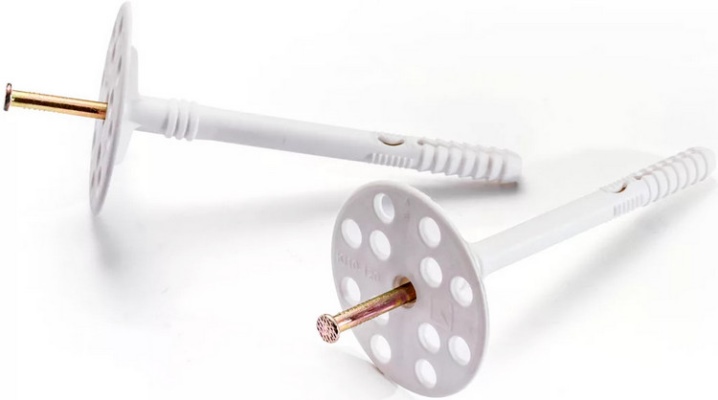
- Framed. They are designed to fit doors and windows into openings. Their distinguishing feature is their great length (up to 260 mm).
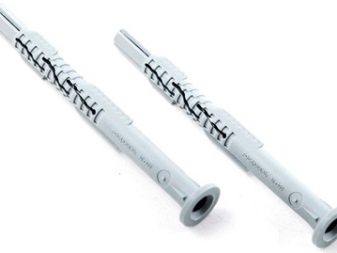
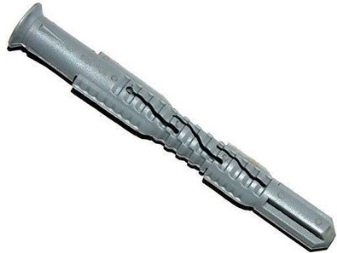
- Butterfly Is a product with spring-loaded folding strips. Such a dowel is used when there is a need to attach an object to a surface with voids inside, for example, a chandelier to the ceiling.
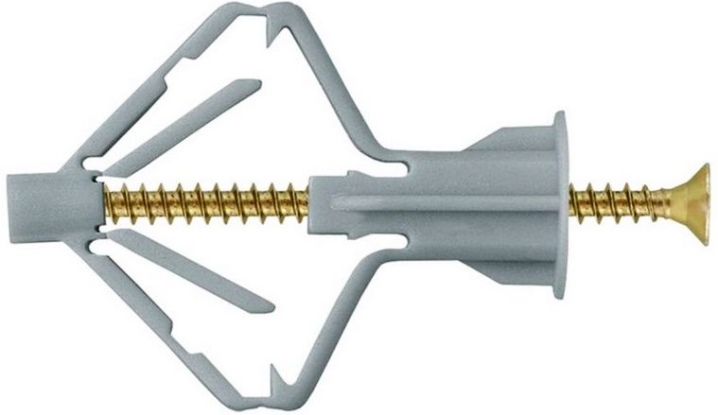
- Universal. They are versatile and can be installed in either hollow or solid material.
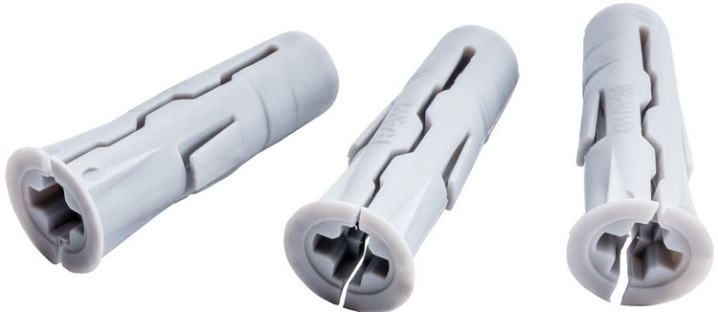
How to choose?
To choose the right dowel, you need to answer yourself only questions such as:
- what to attach;
- what will be attached to;
- how much time is there.
The answer to the first question will help you understand how much force will hold the fastener, how it will look after installation.

The nature of the load must correspond to the power of the dowel. Knowledge of the material will help us choose the right dowel.
The bases to which something can be fixed are divided into four types:
- corpulent (brick, stone, concrete);
- hollow (bricks with voids, expanded clay blocks);
- porous (aerated concrete);
- drywall.
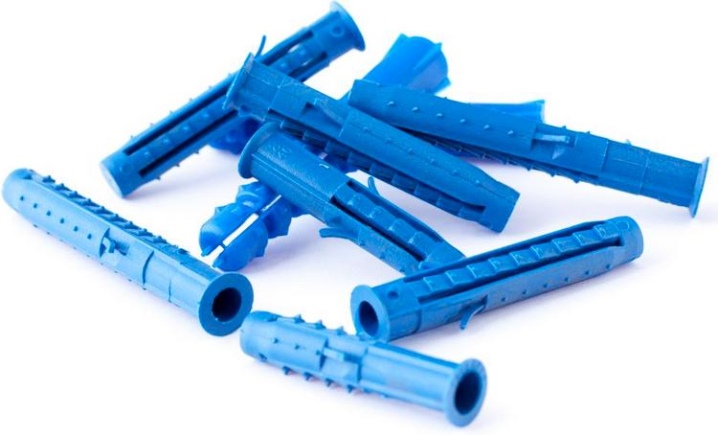
Some of these elements can break with significant force of the spacer part on them, and the fasteners can be removed without effort. The same dowel can behave differently and will be able to withstand different loads when used in different base materials. And also do not forget about screws or self-tapping screws - their diameter should correspond to the inner diameter in the dowel.
And the final parameter is time. If it is limited, then it is better to use dowels-nails. Their use can reduce the installation time by almost half.
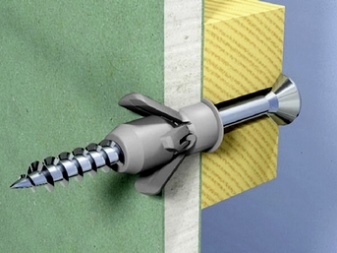

Installation technology
In order for the fasteners to serve for a long time and reliably, the following simple rules must be observed:
- using a drill or punch, make a hole in the wall of the required diameter;
- then clean it from contamination;
- install the dowel in the way recommended by the manufacturer.
Pay attention to the correct installation of the double-leaf rods: the spacers must be installed vertically. The reliability of the fastening depends on this.
For more information on the types of dowels, see the video below.













The comment was sent successfully.